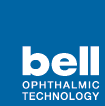Blue light, also known as high-energy visible (HEV) light, is a type of light with short wavelengths emitting a higher energy. The sun is the biggest source of blue light, but we also get exposure from TVs, computers, smartphones and tablets. And a large majority of children and adults are staring at those screens for more than 2 hours every day.
Blue light penetrates deep into the eye, and studies suggest a connection between exposure to blue light and retinal damage, macular degeneration and cataracts. Blue light can also suppress the natural release of melatonin, disrupting sleep.
Fighting back against blue light
In addition to blue light exposure, those screens are causing a few other pains for the digitally bedazzled. An increase in eyestrain, dry eyes, headaches, blurred vision and neck and shoulder pain have all been attributed to our screen addiction.
Eyewear is available with lenses featuring blue light-filtering capabilities that reduce the negative effects of blue light as well as anti-reflective or anti-glare properties. This technology can help minimize the negative effects blue light has on the body’s circadian rhythm, which can hinder a good night’s sleep as well as reduce the symptoms of digital eyestrain.
Regular breaks from the screen and limiting the amount of time spent eyeballing a smartphone can help, too. And it’s probably a good idea to put the screens away at least an hour before bedtime, to help ensure a good night’s sleep.
